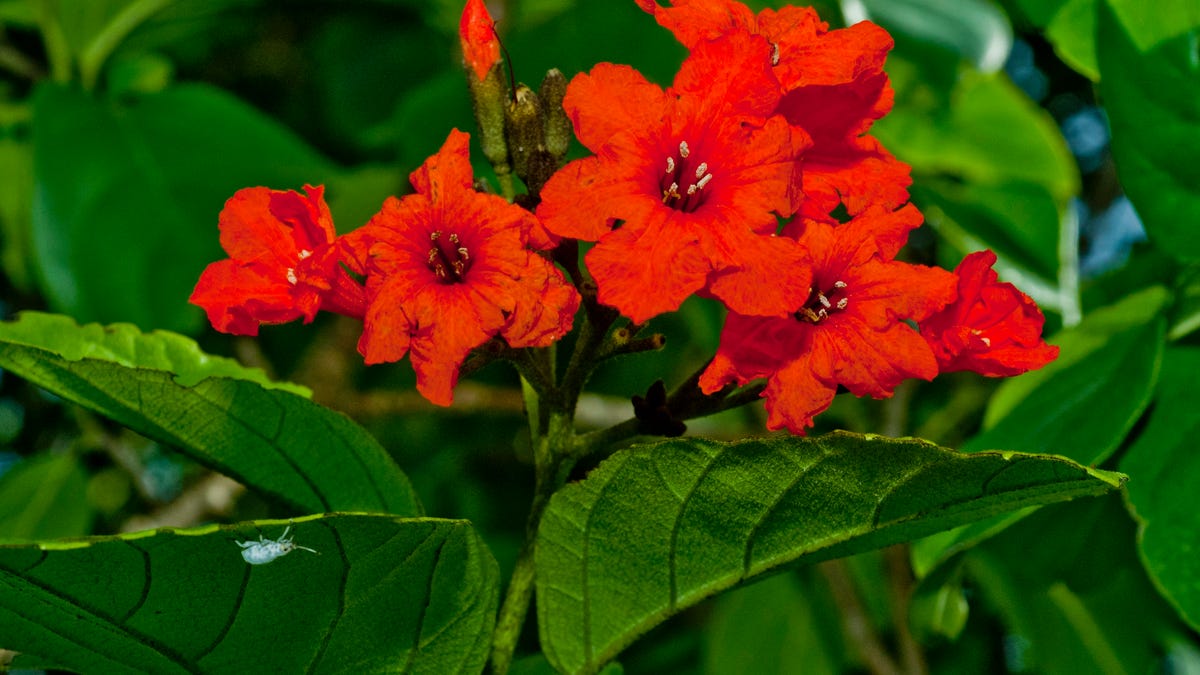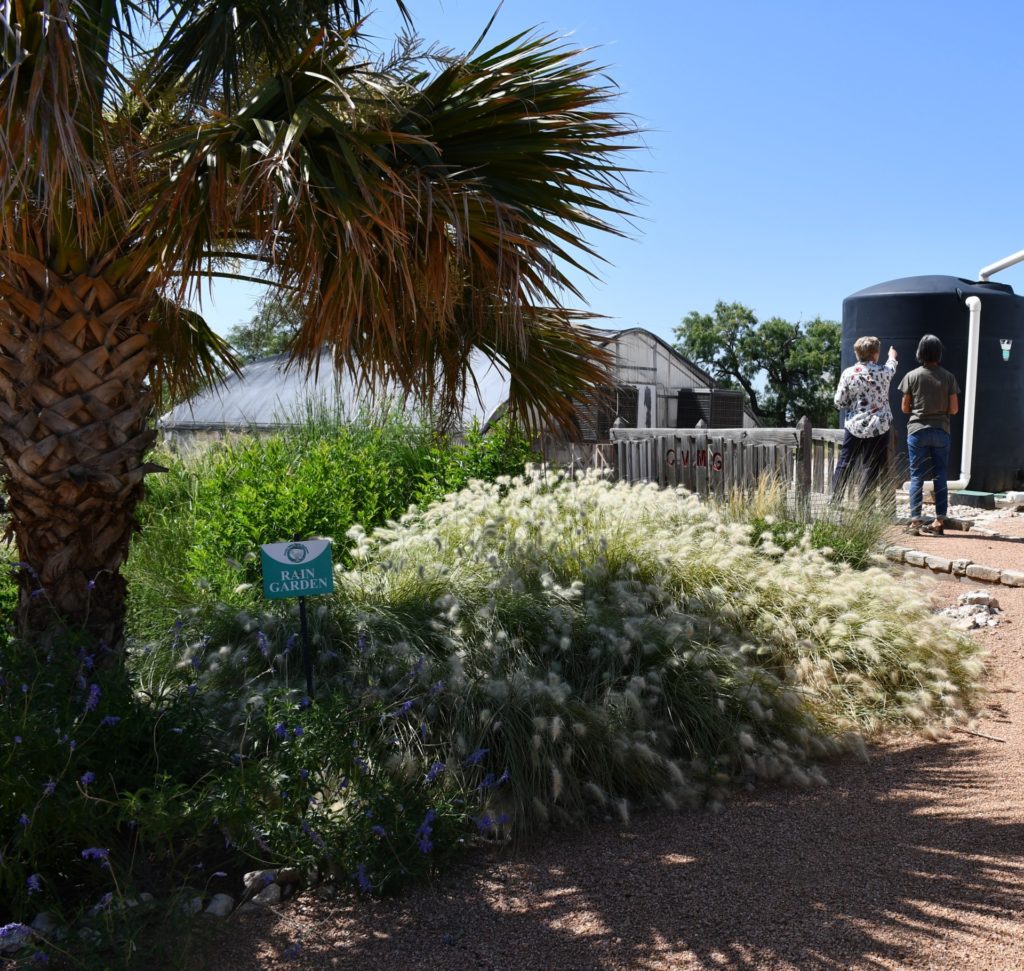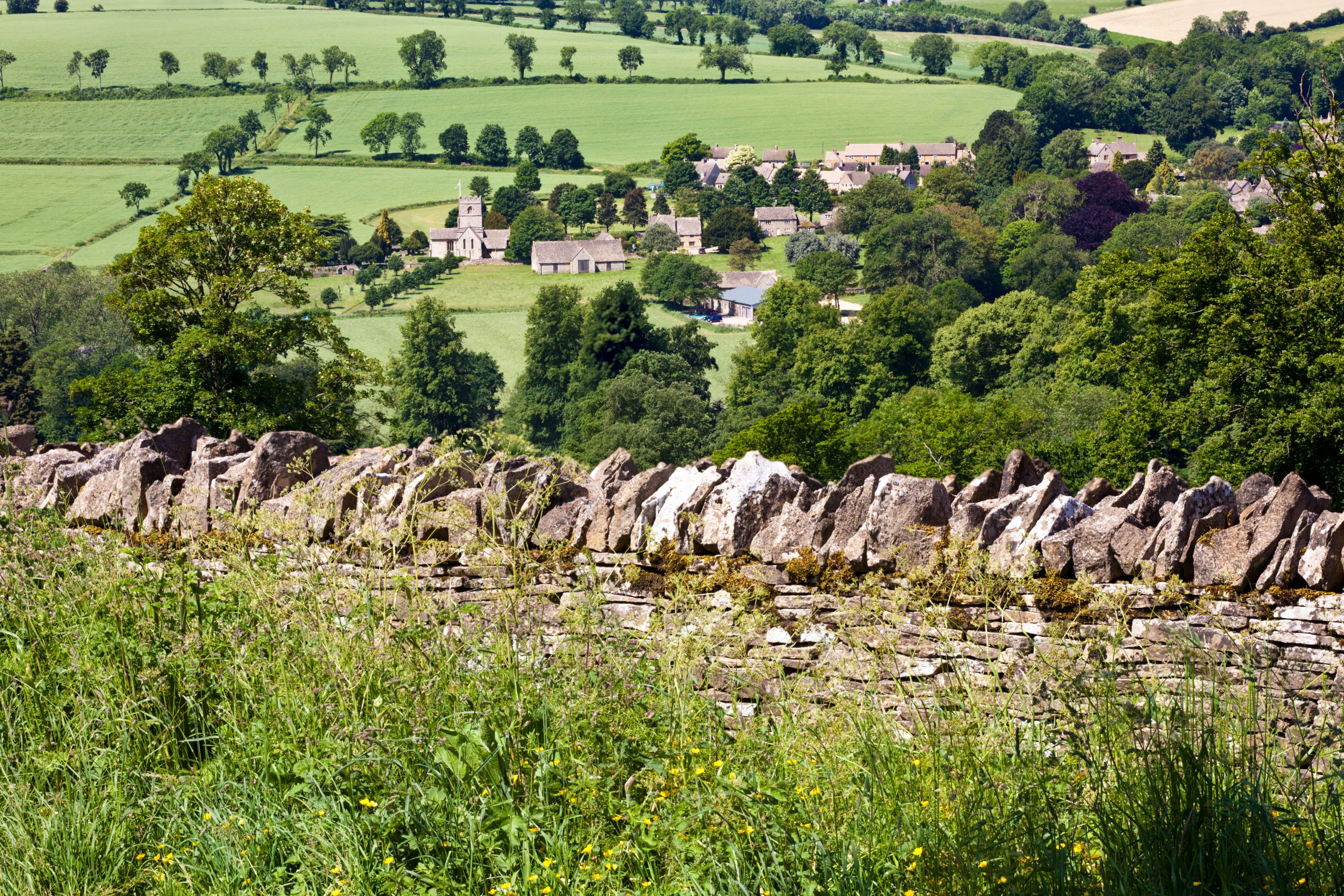Deprecated: str_replace(): Passing null to parameter #3 ($subject) of type array|string is deprecated in /home/newsfqwf/kechambers/wp-includes/formatting.php on line 4268
]]>
 By Maria Sonnenberg | For FLORIDA TODAY Rebecca Heidenreich and Jamie Snider represent a new generation of gardeners eager to go native with their plants. The two young mothers will open their native plant gardens to the visitors of the 13th Annual Landscaping with Florida Natives Tour hosted by the local Conradina Chapter of the […]]]>
By Maria Sonnenberg | For FLORIDA TODAY Rebecca Heidenreich and Jamie Snider represent a new generation of gardeners eager to go native with their plants. The two young mothers will open their native plant gardens to the visitors of the 13th Annual Landscaping with Florida Natives Tour hosted by the local Conradina Chapter of the […]]]>
| For FLORIDA TODAY
Rebecca Heidenreich and Jamie Snider represent a new generation of gardeners eager to go native with their plants.
The two young mothers will open their native plant gardens to the visitors of the 13th Annual Landscaping with Florida Natives Tour hosted by the local Conradina Chapter of the Florida Native Plant Society.
“We’re very excited about the two young ladies on the tour that are getting involved in native plants for their children and the environment,” said chapter spokesperson Jane Higgins.
Ticket holders can tour the featured locations at their own pace from 9 am to 3 pm, Saturday, Oct. 15
This year’s tour features six homes, a large commercial space, one public space, and one Brevard County Environmentally Endangered Lands site for visitor to learn what homeowners and public spaces have done using native plants in different situations.
Native plants are important to preserve our wildlife, pollinators and local heritage as well as requiring much less maintenance, water, and fertilizer, which benefits our local environment and the Indian River Lagoon.
“My grandmother instilled a love of backyard gardening at a very young age,” said Heidenreich.
“I got into Florida native gardening when I took a local herbalism course and the teacher, a fifth generation Florida girl, highly encouraged native plants,” she said.
“It pains me so much when we source plants from outside countries to replace the native ones that are beautiful and functional and wonderful in their own right! So here I am, three years, 140-plus native species later, loving it more every day .I absolutely love all the life it brings to my yard!”
Snider, born and raised in Palm Bay, never gave native plants much thought while growing up. A Marine for five years, she spent the following 15 as a Marine spouse, living in barracks, base housing or rentals where gardening wasn’t much of a prospect.
“I tried some container veggie gardening and failed miserably every time,” she said.
When Snider and her family returned home to family in Palm Bay, she was not thrilled with the shrubs and invasive queen palms in her yard, and ripped pretty much everything out, replacing them with pretty plants found at any nursery.
“What I didn’t know when I started planting was that the pretty-to-me plants weren’t really going to do anything for the butterflies that I wanted to attract to my yard,” she said.
Snider began researching native plants, and after another garden program, went almost 100 percent native.
Like potato chips, native plants can be addictive, as Snider acknowledges.
“I am addicted to host plants – food for caterpillars to transition to butterflies,” she said.
“I have plants to feed and provide shelter to the birds. I have flowering plants that provide nectar or pollen to the various pollinators. I chip away at the yard a little at a time creating as much habitat as will fit in my yard but still have space for the kids to play.”
With the inspiration and information garnered through a native plant tour, gardeners can follow Heidenreich and Snider’s example and soon be playing among the butterflies and birds, whatever the gardener’s age.
Purchase tickets on Eventbrite at 2022 Landscaping with Florida Natives Tour Tickets, Sat, Oct 15, 2022 at 9:00 AM | Eventbrite. Tour brochure and plant lists will be emailed within 24 to 48 hours.
]]>Deprecated: str_replace(): Passing null to parameter #3 ($subject) of type array|string is deprecated in /home/newsfqwf/kechambers/wp-includes/formatting.php on line 4268
]]>
 The Concho Valley Master Gardeners will present the San Angelo Garden Tour on May 21. The event will offer participants the opportunity to learn about landscaping practices in West Texas. The San Angelo Garden Tour will visit private gardens and discuss drought-friendly landscaping choices, such as this rain garden at the Tom Green County 4-H […]]]>
The Concho Valley Master Gardeners will present the San Angelo Garden Tour on May 21. The event will offer participants the opportunity to learn about landscaping practices in West Texas. The San Angelo Garden Tour will visit private gardens and discuss drought-friendly landscaping choices, such as this rain garden at the Tom Green County 4-H […]]]>
The Concho Valley Master Gardeners will present the San Angelo Garden Tour on May 21. The event will offer participants the opportunity to learn about landscaping practices in West Texas.
The San Angelo Garden Tour will visit private gardens and discuss drought-friendly landscaping choices, such as this rain garden at the Tom Green County 4-H Center. (Texas A&M AgriLife photo by Susan Himes)
The event will start at 8:30 am and have several stops throughout San Angelo. Concho Valley Texas Master Gardeners is a Texas A&M AgriLife Extension Service program.
The event is free, but preregistration is required at https://tx.ag/CVMGTourMay.
The tour will highlight turf-free options, low-maintenance and accessibility, drought-tolerant plants, hardscape examples and more.
Once registered, participants will be provided with the first meeting location of the tour. Once at the first meeting place, participants will be given a flyer with the addresses and descriptions of all the tour stops.
Master Gardener volunteers will be on-site at each stop to provide information and handouts.
Drought-conscious options, examples
“This is an event we have wanted to do for a while, but the timing is great because we want to highlight water conservation, drought-tolerant plants and landscapes that can survive and thrive in drought,” said Allison Watkins, AgriLife Extension horticulturist for the Concho Valley.
“We will tour several beautiful home landscapes in town that highlight low-maintenance landscaping, accessibility, and options for going turf-free,” she said.
In addition to landscape gardens, Watkins said there will also be several guided tours of demonstration gardens.
For additional information, visit the Concho Valley Master Gardeners website, or contact Watkins at aewatkins@ag.tamu.edu or by calling 325-659-6528.
-30-
]]>Deprecated: str_replace(): Passing null to parameter #3 ($subject) of type array|string is deprecated in /home/newsfqwf/kechambers/wp-includes/formatting.php on line 4268
]]>
 Successfully establishing and managing natural landscaping will be the topic of this month’s Talk and Tour event held by the McHenry County Department of Planning and Development and the Environmental Defenders of McHenry County from 1 to 3 pm Friday, July 22 at Ted Spella Park in Algonquin. Natural landscaping, such as the use of […]]]>
Successfully establishing and managing natural landscaping will be the topic of this month’s Talk and Tour event held by the McHenry County Department of Planning and Development and the Environmental Defenders of McHenry County from 1 to 3 pm Friday, July 22 at Ted Spella Park in Algonquin. Natural landscaping, such as the use of […]]]>
Successfully establishing and managing natural landscaping will be the topic of this month’s Talk and Tour event held by the McHenry County Department of Planning and Development and the Environmental Defenders of McHenry County from 1 to 3 pm Friday, July 22 at Ted Spella Park in Algonquin.
Natural landscaping, such as the use of native vegetation and other forms of “green infrastructure” can help manage storm water and reduce flooding. It also brings the added benefits of providing natural habitat and helping recharge the aquifers on which McHenry County relies for its water supply.
The event is free and open to the public, but is limited to 30 people. Registration is available here. For more information, email McHenry County Water Resources Specialist Scott Kuykendall at shkuykendall@mchenrycountyil.gov.
]]> Freda Lewis-Stempel sets out to explore one of the Cotswolds’ most alluring and oldest attributes: the 4,000-mile soft dry stone walls. A horse’s tail moves over the wall of Minchinhampton Common as the car crawls past in the evening sun. The speed limit of 48 km / h lets the evening graze non-stop. My windows […]]]>
Freda Lewis-Stempel sets out to explore one of the Cotswolds’ most alluring and oldest attributes: the 4,000-mile soft dry stone walls. A horse’s tail moves over the wall of Minchinhampton Common as the car crawls past in the evening sun. The speed limit of 48 km / h lets the evening graze non-stop. My windows […]]]>
Freda Lewis-Stempel sets out to explore one of the Cotswolds’ most alluring and oldest attributes: the 4,000-mile soft dry stone walls.
A horse’s tail moves over the wall of Minchinhampton Common as the car crawls past in the evening sun. The speed limit of 48 km / h lets the evening graze non-stop. My windows are down and at this quiet pace the sounds of the sheep and chickens hiding behind the walls of their escape are exaggerated, as if to emphasize their agricultural necessity.
Driving in the Cotswolds is one of the greatest joys of the English countryside, for a quiet spring of extraordinary beauty, quietly sitting between the hills and towns, the villages and the views, accompanies me: 4,000 miles of dry stone walls, the length of the Great Wall of China. They may date from the Stone Age, but it was the farmers of the 18th and 19th centuries who used the abundance of natural material in the area to build the walls we see today.
The Cotswold village of Guiting Power in Gloucestershire.
Minchinhampton’s common hill sets the backdrop for the high Cotswolds landscape. A quiet city made of soft, blond stone, which leads to a wide grassland with a view of the surrounding valleys. The stone wanders in color from white gold to ash-brown speckled, some pieces fat and ragged, others centimeter-thin and smooth to the touch. The common room courtyard walls are done in a rooster-and-hen style, with the stones placed vertically on top, while the garden walls often have flat stone surfaces or even smooth cement caps.
Minchinhampton’s Church looms over the other side of the parish, a distant continuation of the walls. In the shade of the trees and walls, a donkey enjoys being petted and petted by a family. As the community expands, traffic jams pile up as cows leisurely stroll out onto the street and onto the literally greener grass on the other side. For the animals lucky enough to graze this part, the walls only act as a calming presence in the distance, never as a boundary; The barriers are neither high nor strong enough to hold up even the laziest refugee. These walls are the darkest gray of weathered stone.
South of Minchinhampton, the snake boundaries are increasing, signaling the shift from deep country to village and town. The hedge and wall are locked in a tug of war alongside the road, with the blackberries and nettles masking the gradual increase in houses.

A Cotswold dry stone wall in progress.
A man stands on a low garden wall and cuts off his hedge. Suddenly the flag of a main street crosses over the roof of the car when a yellow columned market house from 1655 greets me in the flourishing wool town of Tetbury. With its trading houses still looking like they did 300 years ago, and its chipping steps where workers gathered to find work at mop fairs, it has that bewildering perfection that can only be found in a honey-colored Cotswold limestone town is.
I continue my drive through this Area of Outstanding Natural Beauty, where the city and the countryside are connected by the thread of a stone wall. Regardless of the speed as you drive past, the light always picks up the newer stones mixed with the old ones. This is a comforting sign that someone has cared enough about this legacy.
Thirty minutes from Tetbury, on the road through Tomarton, Nick Tanner, a professional member of the Dry Stone Walling Association, is rebuilding a tall garden wall on one of the sprawling badminton farms. He carefully selects each stone. The deep walls narrow from bottom to top to form a “dough”; smaller stones in the middle of the two outer sides are held together by large bond stones that are spaced apart.
“I can salvage about 20% of the stone from a collapsed wall for reuse,” he notes. “I find pieces of history from the time the wall was built. Bottles, an old Feldtor flask – you can date the wall of whatever you find. I always make sure to put them back into the wall to keep the stories in place. ‘The wildlife that lives among the stones also adds to the narrative. “I create spaces in the walls in which newts, frogs and insects can be accommodated.”
I drive past meandering walls and implicitly thank Mr Tanner and his dry stone colleagues for carefully preserving the oldest identifier in the Cotswolds. From a motorist’s point of view, there is no greater thank you for that thank you than driving the A429 from Cirencester to Stow-on-the-Wold. This central section of the Fosse Way, the car-lover’s Roman road, is a stone and wood highway lined with blinkers. The walls rise from small to high, some stones are so thin that they are almost made of slate and are packed tightly like sliced bread. Others, round and rough, are collapsed and covered in ivy, with just enough stones poking through to keep the spirit alive.
The Broadway Tower leads me north to Worcestershire and rises on its beacon, three Saxon towers with an irrepressible English spirit. Steps from the road, the ‘tallest little castle in the Cotswolds’ has had many lives.
Built in 1798 by architect James Wyatt for the Earl of Coventry, the tower was home to Sir Thomas Philipps’ printing works, a country retreat for William Morris and other members of the Arts and Crafts movement, and served as a First World lookout point of the War Royal Observers Corps and a Cold War nuclear bunker. As I climb the 65-foot building on a completely cloudless day, all 16 surrounding counties are calling in the distance, and their 1,000 farm walls like snakes shed stone scales behind them as they slide down the valleys.
A couple of winding miles across the border into Gloucestershire, a sparkling perfume fills the car. Immediately above the village of Snowshill, fields of lavender grow in low rows parallel to the walls. The morning sun lifts a purple calm over the rough stone, while the crickets and bees harmonize in the heat. The salty, burning taste of the limestone attracts the murmuring flies.
Embraced in the arms of the valley, the warmth that this village has built sings from the walls of the huts, and the sloping ceilings rise with the slope of the hill. The village is a lofty circle of flower and hut walls around St. Barnabas Church and the Snowshill Arms Pub.
An alley with falling walls and broken asphalt catches the eye as an adventurous route to find the other side of Snowshill. 30 minutes later, with no wonderful discoveries and increasingly battered hangings, the walls seem to have finally let me down.
As soon as this thought collects, the gaps between the trees widen and the ridge opens to reveal acres of wildflower meadows. A thickness of green nettles and waist-high scorched grass, bushy purple thistles sown with gingham blue millet and royal red poppies extends to the heaped furrows of straw fields below.
On a whim, I turn left. The wandering walls and overgrown edges lead me deeper into the quiet of the lowland afternoon. A doll’s villa rises above the flat fields – a perfect symmetry of neoclassical architecture that meets buttery Cotswold limestone. This is the Lodge Park Grandstand, part of the Sherborne Estate built by Sir John ‘Crump’ Dutton for the pleasure of family and friends in the 1630s. They played out their worries and watched as deer ran along the miles of dry stone walls. For guests lucky enough to be invited, this 40 mile race would be the fastest they would see in their lives.
The stone leans over the roof balustrade, still chatting with the screams and chatter of days gone by when a man could look at the local agricultural barriers behind which his cattle safely grazed, and had the fantasy of turning those stones into a sports haven . “

The idyllic picture of cottages covered in blooming wisteria on a Cotswold stone wall. These houses are in the village of Broadway, but there are many other options for those looking to relocate to the Cotswolds. Credit: Robert Harding / Alamy
Where should you be moving in the Cotswolds? The answer depends on what is more important to you and

Where contemporary charm meets contemporary living.

KJTK60 WORLD WAR I ARMISTICE November 1918. British soldiers in France celebrate the signing of the Armistice Credit: Alamy Stock Photo
They cheered, they cried, they laughed, they danced in the streets. Almost 100 years until today

Spectacular summer alpine flowers, including brush, lupins (lupins) and western pasque flowers, in Mount Rainier National Park, Washington, USA, North America. Photo credit: © Bob Gibbons
Women’s slippers by the hundreds, if not thousands, golden slopes with daisies, sward of Salvias: Sarah Raven greets Bob Gibbons,
]]>